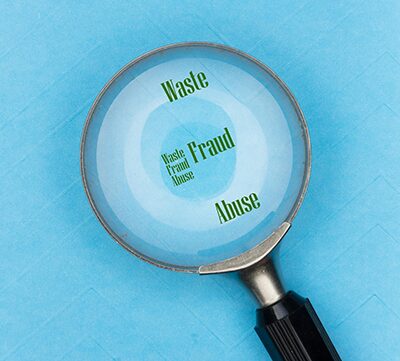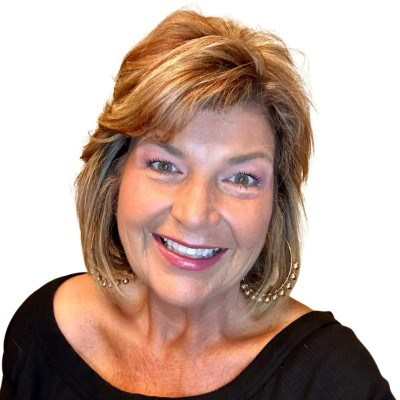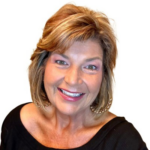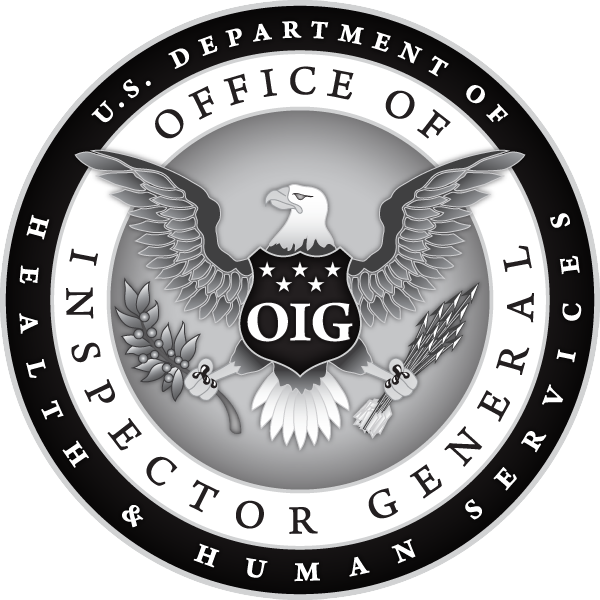by Elizabeth E. Hogue, Esq. | Dec 18, 2025 | Admin, Home Health, Hospice, Legal
by Elizabeth E. Hogue, Esq.
Fraud and Abuse Compliance
Why All Providers Should Have One
Providers may have heard or read about the importance of Fraud and Abuse Compliance Programs in their organizations. Despite the wealth of available information about Compliance Programs, many providers continue to express uncertainty about their value.
Coincidentally, as we are preparing to publish this article, HHS publishes this report on the compliance audit of Guardian Home Care, LLC.
Here are some of the questions providers often ask about Compliance Programs:
Why should we have a Fraud and Abuse Compliance Program?
First
The Office of Inspector General (OIG) of the U.S. Department of Health and Human Services (HHS) has clearly stated that all providers are now required to have current Compliance Programs that are fully implemented.
Next
As a practical matter, when providers establish and maintain Compliance Programs, it clearly discourages regulators from pursuing allegations of fraud and abuse violations. Jody Hunt, formerly of the DOJ, says providers should create robust fraud and abuse compliance programs. Then providers can argue that they shouldn’t be liable for violations because their compliance programs demonstrate that they had no intent to commit fraud.
Technically speaking, the Federal Sentencing Guidelines make it clear that establishment and implementation of Compliance Programs is considered to be a mitigating factor. That is, if accusations of criminal conduct are made, the consequences may be substantially less severe as a result of a fully implemented Compliance Program.
Additionally
Providers with Compliance Programs are more likely to avoid fraud and abuse. This is because Programs routinely establish an obligation on the part of every employee to report possible instances of fraud and abuse and include training for all employees.
Compliance Programs may also help to prevent qui tam or so-called “whistleblower” lawsuits by private individuals, rather than by government enforcers, who believe that they have identified instances of fraud and abuse. There are significant incentives to bring these legal actions since “whistleblowers” receive a share of monies recovered as a result of their efforts. Some “whistleblowers” have received millions of dollars. Compliance Programs make it clear that employees have an obligation to bring any potential fraud and abuse issues to the attention of their employers first.
Also…
The federal Affordable Care Act (ACA) requires providers to have Compliance Programs. In short, it’s the law!
Finally
The Deficit Reduction Act (DRA) requires providers who receive more than $5 million in monies from state Medicaid Programs per year to implement policies and procedures, provide education to employees and put information in their employee handbooks about fraud and abuse compliance. These requirements can be met through implementation of Fraud and Abuse Compliance Programs.
We don't receive reimbursement from the Medicare or Medicaid Programs.
Do we still need a Compliance Program?
Statutes and regulations governing fraud and abuse also apply to providers who receive payments from any federal and state healthcare programs, including Medicaid, Medicaid waiver and other federal and state health care programs, such as Tri-Care. Many private insurers have followed the federal government’s “lead” in terms of fraud and abuse enforcement. So private duty providers must have compliance programs, too.
Should we just use the model guidance that is applicable to us?
We hear that the OIG has provided guidance for various segments of the healthcare industry regarding Compliance Programs. Specifically, the OIG has already published guidance for clinical laboratories, hospitals, home health agencies, skilled nursing facilities (SMFs), hospices, physicians’ practices, third-party billing companies and home medical equipment companies. The OIG will publish updated guidance for all providers, It has already done so for SNFs.
The answer is “No!” Guidance from the OIG is not a model Compliance Program. Guidance from the OIG consists of general guidelines and does not constitute a valid Compliance Program. In addition, the OIG has made it clear that Programs must be customized for each organization.
Do we have to conduct internal audits first?
We have read that, before implementing Compliance Programs, providers must conduct expensive internal audits that can take many months to complete. Is this true?
While beginning the compliance process with an extensive internal audit is certainly one way to proceed, it is not the only viable way to work toward compliance. It is equally valid to begin with Compliance Programs that are customized for the organization that includes training for all employees about fraud and abuse and Compliance Programs. Then all staff members can subsequently participate in internal compliance activities, including audits, with a process in place to handle any issues that arise as a result of the audits.
We already have policies. Why do we need a Compliance Program too?
Compliance Programs are specific types of documents that routinely address issues that providers do not usually cover in internal policies and procedures. In addition, providers may not gain benefits under the Federal Sentencing Guidelines described in the first question above if there is no formal document called a Compliance Program.
We're accredited. Doesn't that mean we are in compliance?
On the contrary, Compliance Programs appropriately address potential fraud and abuse issues. They also include mechanisms for helping to ensure compliance such as processes for identification and correction of potential problems that are not addressed during the certification process. In other words, organizations may be accredited but fail to meet applicable compliance standards for fraud and abuse.
Will it help with investigations?
Will the fact that our organization has a Compliance Program make any difference with regard to the outcome of fraud and abuse investigations and the imposition of Corporate Integrity Agreements (CIA’s)?
Yes, it may make a considerable difference based on statements from the OIG. If providers have Compliance Programs in place that are current and fully implemented, the OIG may be less aggressive in pursuing potential violations. When the OIG actually discovers problems with fraud and abuse in organizations, providers are usually asked to develop and implement a Corporate Integrity Agreement (CIA). The OIG often requires CIA’s to include a process for stringent monitoring by the OIG on a continuous basis. These monitoring activities can be extremely burdensome to providers in terms of both time and money. Providers with valid Compliance Programs are not necessarily asked to develop and implement CIA’s.
Now is the time for all providers to recognize and act upon the need to establish and maintain Compliance Programs. “Working on it” is no longer good enough.
Elizabeth Hogue is an attorney in private practice with extensive experience in health care. She represents clients across the U.S., including professional associations, managed care providers, hospitals, long-term care facilities, home health agencies, durable medical equipment companies, and hospices.
©2025 Elizabeth E. Hogue, Esq. All rights reserved.
No portion of this material may be reproduced in any form without the advance written permission of the author.
©2025 by The Rowan Report, Peoria, AZ. All rights reserved.
by Elizabeth E. Hogue, Esq. | Dec 4, 2025 | Legal
by Elizabeth E. Hogue, Esq.
What Providers Can Give, Part 6
Provider Kickback Exclusions
Providers, including marketers, are tempted to give patients and potential patients free items and services. While providers usually have good intentions, they must comply with applicable requirements.
As Part 1 of this series indicates, there are two applicable federal statutes: the Anti-Kickback Statute (AKS) and the Civil Monetary Penalties Law (CMPL). Part 1 also makes it clear that there are a number of exceptions. If providers meet the requirements of applicable exceptions, they can give patients and potential patients free items and services that would otherwise violate applicable requirements.
Part 2 describes an exception for items and services of nominal value with a retail value of no more than $15 per item or $75 in the aggregate per patient on an annual basis that may be given by providers to beneficiaries. Providers may not, however, give cash or cash equivalents.
Part 3 describes the circumstances under which providers may give free items and services to patients with demonstrated financial need.
Part 4 summarizes recent guidance from the Office of Inspector General (OIG) about giving incentives to promote vaccination against COVID-19.
Part 5 describes an exception for preventive items or services.
This article addresses an exception for free items or services to promote access to care.
The CMPL excludes items or services that improve beneficiaries’ ability to obtain items and services payable by the Medicare or Medicaid Programs and that pose a low risk of harm to both beneficiaries and the Programs because they are unlikely to:
- Increase costs to federal health programs or beneficiaries through overutilization or inappropriate utilization
- Interfere with or skew clinical decision-making
- Raise issues of patient safety or concerns about quality of care
This exception does not apply to waivers of copayments, or to the provision of cash or cash equivalents.
In addition, the exception applies only to items or services that promote access to care covered by the Medicare or Medicaid Programs, i.e., items or services that improve particular beneficiaries’ ability to obtain items or services payable by the Medicare or Medicaid Programs. The exception does not apply to items or services that reward receipt of care or incentives for complying with treatment regimens.
The OIG says, for example, that this exception includes giving patients the tools they need to remove socioeconomic, educational, geographic, mobility, or other barriers to getting necessary care. Such barriers may include free childcare, so that patients may attend educational programs or appointments for treatment; free local transportation or parking reimbursement for appointments; smartphone apps or low-cost fitness trackers; gift cards that promote access to care; educational materials and informational programs about disease states or treatments; and self-monitoring equipment, such as scales or blood pressure cuffs. The exception does not include movie tickets, for example, given to patients to reward them for attending educational sessions.
Providers should certainly utilize the exceptions described in this series of articles to provide the maximum permissible assistance to patients.
Elizabeth Hogue is an attorney in private practice with extensive experience in health care. She represents clients across the U.S., including professional associations, managed care providers, hospitals, long-term care facilities, home health agencies, durable medical equipment companies, and hospices.
©2025 Elizabeth E. Hogue, Esq. All rights reserved.
No portion of this material may be reproduced in any form without the advance written permission of the author.
©2025 by The Rowan Report, Peoria, AZ. All rights reserved.
by Elizabeth E. Hogue, Esq. | Nov 25, 2025 | Admin, Clinical, Legal
by Elizabeth E. Hogue, Esq.
What Can Providers Give...
Providers, including marketers, are tempted to give patients and potential patients free items and services. While providers usually have good intentions, they must comply with applicable requirements.
As Part 1 of this series indicates, there are two applicable federal statutes: the Anti-Kickback Statute (AKS) and the Civil Monetary Penalties Law (CMPL). Part 1 also makes it clear that there are a number of exceptions. If providers meet the requirements of applicable exceptions, they can give patients and potential patients free items and services that would otherwise violate applicable requirements.
Part 2 describes an exception for items and services of nominal value with a retail value of no more than $15 per item or $75 in the aggregate per patient on an annual basis that may be given by providers to beneficiaries. Providers may not, however, give cash or cash equivalents.
Part 3 describes the circumstances under which providers may give free items and services to patients with demonstrated financial need.
Part 4 summarizes recent guidance from the Office of Inspector General (OIG) about giving incentives to promote vaccination against COVID-19.
According to the OIG, providers may also give patients free preventive care items or services. The definition of remuneration under the CMPL regulations excludes incentives given to patients/potential patients to promote the delivery of preventive care services so long as the delivery of such services is not directly or indirectly related to the provision of other services reimbursed in whole or in part by the Medicare Program or other state and federal healthcare programs. Preventive services include:
- Prenatal services or postnatal well-baby visits, or specific clinical services described in the current U.S. Preventive Services Task Force’s Guide to Clinical Preventive Services
- Services that are reimbursable in whole or in part by the Medicare Program, or other federal and state care programs
However, incentives related to preventive services may not include:
- Cash or instruments convertible to cash
- Incentives of value that are disproportionally large in relationship to the value of the preventive care services in terms of either the value of the services or the future health care costs reasonably expected to be avoided as a result of preventive care
Any tie between provision of exempt covered preventive care services and covered services that are not preventive may, therefore, violate the CMPL and the AKS.
The OIG has stated that some free or discounted services may fit within the preventive care exception described above. These services may include free blood sugar screenings and cholesterol tests.
The AKS does not include an exception similar to the provisions of the CMPL described above. In commentary to Supplemental Compliance Guidance for Hospitals, however, the OIG said:
From an anti-kickback perspective, the chief concern is whether an arrangement to induce patients to obtain preventive care services is intended to induce other business payable by a Federal health program. Relevant factors in making this evaluation would include, but not be limited to: the nature and scope of the preventive care services; whether the preventive care services are tied direct or indirectly to the provision of other items or services and, if so, the nature and scope of the other services; the basis on which patients are selected to receive the free or discounted services; and whether the patient is able to afford the services.
Based upon the above, the OIG is unlikely to challenge the provision of free preventive services given to patients and potential patients, under either the CMPL or the AKS, so long as the above requirements are met.
Elizabeth Hogue is an attorney in private practice with extensive experience in health care. She represents clients across the U.S., including professional associations, managed care providers, hospitals, long-term care facilities, home health agencies, durable medical equipment companies, and hospices.
©2025 Elizabeth E. Hogue, Esq. All rights reserved.
No portion of this material may be reproduced in any form without the advance written permission of the author.
©2025 by The Rowan Report, Peoria, AZ. All rights reserved.
by Elizabeth E. Hogue, Esq. | Nov 13, 2025 | Legal
by Elizabeth E. Hogue, Esq.
What Can Providers Give to Patients...
On May 24, 2021, the Office of Inspector General (OIG) of the U.S. Department of Health and Human Services (HHS) issued another FAQ on the Application of Administrative Enforcement Authorities to Arrangements Directly Connected to the Coronavirus Disease:
Would the offer or provision of cash, cash-equivalent, or in-kind incentives or rewards to Federal health care program beneficiaries who receive COVID-19 vaccinations during the public health emergency violate the OIG’s administrative enforcement authorities?
The OIG first addressed this question by acknowledging that a broad range of entities, including providers, are offering a wide variety of incentives and rewards to recipients who are vaccinated; such as food and beverages, cash, and tickets to concerts and sporting events. The OIG recognizes that widespread vaccine administration is crucial to the pandemic response and that incentives and rewards may promote broader access and increase the number of recipients.
The OIG also pointed out, however, that these rewards and incentives may violate the federal Anti-Kickback Statute (AKS) and the Civil Monetary Penalties Law (CMPL) governing beneficiary inducements.
The OIG then concluded that providers, in the limited context of the COVID-19 public health emergency, may give rewards or incentives to beneficiaries who receive either one or both doses of the vaccine because such incentives and rewards “would be sufficiently low risk under the Federal anti-kickback statute and Beneficiary Inducements CMP.”
Providers must, however, meet the following requirements:
The incentive or reward must be furnished in connection with receipt of a required dose of COVID-19 vaccine, including either one or two doses depending on vaccine type.
The vaccine administered is authorized or approved by the Food and Drug Administration (FDA) as a vaccine for COVID-19 and is administered in compliance with all other applicable federal and state rules and regulations, including conditions for receipt of vaccine supplies from the federal government by providers.
Incentives or rewards are not tied to or contingent upon any other arrangement or agreement offering incentives or rewards between providers and beneficiaries.
Incentives or rewards are not conditioned on recipients’ past or anticipated future use of other items or services that are reimbursable in whole or in part by federal health care programs.
Incentives or rewards are provided during the COVID-19 public health emergency.
The OIG then pointed out that the AKS and CMPL relate to items and services for which payment may be made in whole or in part under a Federal health program. According to the OIG, it is unlikely that these statutes are implicated by incentive and rewards furnished to commercially insured or uninsured individuals.
Finally, the OIG concluded by saying that it would not express any opinion on the merits or utility of particular incentives or rewards to address the goal of encouraging vaccination.
As long as the criteria above are met, providers may give incentives or rewards to beneficiaries in order to encourage them to be vaccinated.
This article is part 4 in the series. Read Part 1, Part 2, and Part 3.
Elizabeth Hogue is an attorney in private practice with extensive experience in health care. She represents clients across the U.S., including professional associations, managed care providers, hospitals, long-term care facilities, home health agencies, durable medical equipment companies, and hospices.
©2025 Elizabeth E. Hogue, Esq. All rights reserved.
No portion of this material may be reproduced in any form without the advance written permission of the author.
©2025 by The Rowan Report, Peoria, AZ. All rights reserved.
by Elizabeth E. Hogue, Esq. | Mar 13, 2025 | Admin, Clinical, Regulatory
by Elizabeth E. Hogue, Esq.
Nursing Facility Compliance Guidance
In November of 2024, the Office of Inspector General (OIG) of the U.S. Department of Health and Human Services issued revised “Nursing Facility Industry Segment-Specific Compliance Program Guidance.” This guidance describes:
- Risk areas for nursing facilities
- Recommendations and practical considerations for mitigating risks
- Other important information that the OIG believes nursing facilities should consider when implementing, evaluating, and updating their compliance and quality programs
Guidance Extends to Post-Acute Providers
The guidance targets nursing facilities. Howeve, it also clearly states that post-acute providers other than nursing facilities should use the guidance in their compliance efforts. The OIG says: “We encourage all long-term and post-acute providers to establish and maintain effective compliance and quality programs.” Guidance for nursing facilities, for example, specifically addresses relationships between nursing facilities and hospices.
acknowledges that nursing facilities may arrange for hospice services for patients who meet the eligibility criteria and who elect the hospice benefit.
reminds facilities and hospices that requesting or accepting remuneration from hospices may subject both parties to liability under the federal anti-kickback statute. This applies if the remuneration may influence nursing facilities’ decisions to do business with hospices or induce referrals between the parties.
points out that nursing facilities that refer patients for hospice services who do not qualify for the hospice benefit may be liable for submission of false claims.
says that hospices are permitted to furnish noncore services under arrangements with other providers or suppliers, including nursing facilities. State Medicaid Programs pay hospices at least 95% of the Programs’ daily facility rate. Hospices are then responsible to pay facilities for patients’ room and board.
provides a list of suspicious arrangements between nursing facilities and hospices, including: (1) referrals of patients to hospices to induce hospices to refer patients to facilities, and (2) solicitation or receipt of hospices of goods or services for free or below fair market value, including nurses or other staff to provide services at facilities for nonhospice patients and monetary payments for:
- referrals of patients to hospices to induce hospices to refer patients to facilities
- solicitation or receipt of hospices of goods or services for free or below fair market value
- solicitation of nurses or other staff to provide services at facilities for nonhospice patients
- monetary payments for:
-
-
- Room and board for patients in excess of what nursing facilities receive directly from Medicaid if patients are not enrolled in hospices. Additional payments must represent fair market value of additional services actually provided to patients that are not included in Medicaid daily rates.
- Additional services for residents that include room and board payments to hospices from Medicaid Programs
- Additional services for patients that are not included in room and board payments from Medicaid Programs at rates that are above fair market value
- Provision of services by nursing facilities to hospice patients at rates that are above fair market value
Hospices are surely under fire these days from fraud enforcers. Engaging in the practices described above is likely to draw attention by enforcers and possible enforcement action.
Elizabeth Hogue is an attorney in private practice with extensive experience in health care. She represents clients across the U.S., including professional associations, managed care providers, hospitals, long-term care facilities, home health agencies, durable medical equipment companies, and hospices.
©2025 Elizabeth E. Hogue, Esq. All rights reserved.
No portion of this material may be reproduced in any form without the advance written permission of the author.
©2025 by The Rowan Report, Peoria, AZ. All rights reserved. This article originally appeared in The Rowan Report. One copy may be printed for personal use: further reproduction by permission only. editor@therowanreport.com
by Elizabeth E. Hogue, Esq. | Feb 14, 2025 | Clinical, Medicare Advantage, Regulatory
by Elizabeth E. Hogue, Esq.
Providers of services to patients in their homes are anecdotally familiar with situations in which patients need help at home, but do not qualify for home health services and have not arranged for or are unable to afford home care/private duty services. These patients need assistance, but do not need transport.
The problem for Emergency Medical Services (EMS) is nonpayment for services if patients are not transported for services.
Can EMS Charge Without Transport
The Office of Inspector General (OIG) of the U.S. Department of Health and Human Services has weighed in on whether local EMS can meet this need and bill patients’ insurance for treatment in place (TIP) services. The OIG has “blessed” the provision and billing of these services in Advisory Opinion No. 24-09 issued on November 21, 2024.
Treatment in Place Requirements to Bill Insurance
Specifically, the OIG says that EMS may provide services to patients in their homes or TIP services and bill Patients’ insurers if the following requirements are met:
- Charges to patients’ insurers would be limited for emergency responses only.
- Charges for TIP services must be based on the level of care furnished to patients and cannot exceed amounts currently claimed for payment for the same levels of care furnished in connection with ambulance transports.
- Charges are made regardless of whether patients are enrolled in commercial insurance plans or federal health programs.
- EMS accepts payment for TIP services from patients’ health insurances as payment in full.
- Patients will not be billed for any cost-sharing amounts under patients’ health insurance, including federal health care programs for covered TIP services, regardless of whether they are residents or nonresidents of the county where TIP services are provided.
- EMS cannot later claim cost-sharing amounts waived as bed debts for payments under federal health care programs or otherwise shift the burden of cost-sharing waivers onto federal health care programs, other payors, or individuals by, for example, balance billing.
In light of the above, the OIG first acknowledged that the prohibition on waivers of cost-sharing under the federal anti-kickback statute (AKS) is applicable and that the requirements of a safe harbor that addresses waivers of cost-sharing amounts for municipally owned ambulances are not met by the proposed arrangement. The OIG also said that the proposed arrangement would result in remuneration in the form of cost-sharing waivers for TIP services and TIP services provided at no charge to patients. Consequently, remuneration provided implicates both the AKS and the Beneficiary Inducements CMP.
Nonetheless, the OIG concluded that the arrangement involves a low risk of fraud and abuse. In addition to the above requirements, the OIG concluded that neither Medicare Part B nor the State Medicaid Program currently covers TIP services; only a handful of Medicare Advantage Plans and some Medicaid Programs currently cover TIP services. This means that, in most circumstances, the arrangement will result in no costs to federal health care programs and, in fact, may reduce costs by avoiding ambulance transport or subsequent hospital care. Patients may also receive care more quickly and efficiently, and at more appropriate levels of care when they receive TIP services.
Treatment in Place Cost-sharing Waivers
Finally, according to the OIG, waivers of cost-sharing for TIP services or the provision of free TIP services are unlikely to affect patients’ decisions to use future emergency ambulance services reimbursed by federal health care programs.
Providers are increasingly aware that patients need a variety of services in their homes. The OIG has opened another door!
Elizabeth Hogue is an attorney in private practice with extensive experience in health care. She represents clients across the U.S., including professional associations, managed care providers, hospitals, long-term care facilities, home health agencies, durable medical equipment companies, and hospices.
©2025 Elizabeth E. Hogue, Esq. All rights reserved.
No portion of this material may be reproduced in any form without the advance written permission of the author.
©2025 by The Rowan Report, Peoria, AZ. All rights reserved. This article originally appeared in The Rowan Report. One copy may be printed for personal use: further reproduction by permission only. editor@therowanreport.com
by Kristin Rowan | Jan 9, 2025 | Advocacy, Editorial, Medicare Advantage, Regulatory
Medicare Advantage Bill Dies in Congress
The 118th United States Congress, ran from January 3, 2023 to January 3, 2025. This Congress’s first law was passed on March 20, 2023, much later than most previous congressional sessions. In its first year, it passed only 34 bills. In the two years of this congressional run, the 118th passed 209 public laws, almost half the average since 1989. Among the many bills that died on the floor before time ran out was the Improving Seniors’ Timely Access to Care Act (H.R. 8702/S. 4532). Senate and House members introduced the bill on June 12, 2024.
Improving Seniors' Timely Access to Care
In June of 2024, senators and representatives introduced bipartisan legislation that would have curbed Medicare Advantage’s ability to deny claims. The bill included language that allowed CMS the authority to establish standard timeframes for electronic prior authorizations requests including expedited requests and real-time decisions for routinely approved services. The bill also included requirements for transparency and reporting, including:
-
- establishing an electronic prior authorization process
- establishing a process for real-time decisions for routine services
- providing more detailed reports on use of prior authorization including
- rates of approvals
- denials
- average time for approvals
- pressing Medicare Advantage providers to incorporate input from health care providers on their authorization processes and decisions
- adopting prior authorization programs that adhere to evidence-based medical guidelines
- requiring Medicare Advantage providers to report on the percentage of denied claims that were later overturned
At the time this bill was reintroduced to Congress in June, 135 House co-sponsors and 44 Senate co-sponsors signed on. By the end of July, the bill had been read, sent to the House Ways and Means Committee, and passed. Representative Mike Kelly (R-PA) noted that more than 500 organizations had endorsed the act.
In early 2024, an audit from the Office of the Inspector General (OIG) at the U.S. Department of Health and Human Services (HHS) revealed that Medicare Advantage plans eventually approve 75% of authorization requests for services that were initally denied. More recently, HHS OIG released a report showing that MA plans incorrectly denied services to beneficiaries even though they met the requirements for coverage. Following the report, HHS OIG made the following recommendations to CMS:
-
- issue new guidance on the use of MAO clinical criteria in medical necessity reviews
- update audit protocols for Medicare Advantage to address the issues of MAO use of clinical critera and examining service types
- direct MAOs to indentify and address the causes for manual review errors and system errors.
CMS agreed with all three recommendations.
Despite the bipartisan, bicameral support of this much needed overhaul of Medicare Advantage providers, the bill is currently in pile of unaddressed issues that the 118th Congress just didn’t get to. Despite having it in front of them for five months, and despite passing nearly half the legislation of the 17 most recent congressional sessions, the bill that would keep MA beneficiaries from waiting inordinate amounts of time for routine care will have to wait for the next session to resume. Let’s hope the 119th Congress is more productive.
Kristin Rowan has been working at The Rowan Report since 2008. She is the owner and Editor-in-chief of The Rowan Report, the industry’s most trusted source for care at home news .She also has a master’s degree in business administration and marketing and runs Girard Marketing Group, a multi-faceted boutique marketing firm specializing in content creation, social media management, and event marketing. Connect with Kristin directly kristin@girardmarketinggroup.com or www.girardmarketinggroup.com
©2025 by The Rowan Report, Peoria, AZ. All rights reserved. This article originally appeared in The Rowan Report. One copy may be printed for personal use: further reproduction by permission only. editor@therowanreport.com
by Tim Rowan | Nov 8, 2024 | Clinical, CMS, Editorial, Medicare Advantage, Regulatory
by Tim Rowan, Editor Emeritus
OIG Accuses Medicare Advantage Providers of Padding Patient Assessments...Again
“Hello, this is your Medicare Advantage company calling. I am one of their clinicians and it is time for us to update your health assessment. If you will agree to a home visit, we will send you a $50 gift card to CVS.”
This phone call my brother received is typical, increasingly common, and not necessarily on the up-and-up, according to a new report to CMS from the Department of Health and Human Services Office of the Inspector General (OIG). OIG found that these home visits, known in the insurance industry as “Health Risk Assessments,” (HRA) when coupled with HRA-related claims data, increased Medicare Trust Fund payments to MA companies $7.5 billion in 2022 and twice that in 2023. Most of it went to the top 20 companies.
The October 2024 report, “Medicare Advantage: Questionable Use of Health Risk Assessments Continues to Drive Up Payments to Plans by Billions,” accuses the industry as a whole of improperly padding payments by “finding” new health conditions during these HRA’s that may indicate the need for additional care at additional cost to the company. It questions the use of MA plan employees doing these assessments instead of relying on the customer’s primary care physician’s reports.
OIG references CMS’s own report, “Part C Improper Payment Measure (Part C IPM) Fiscal Year 2023 (FY 2023) Payment Error Rate Results,” to determine that gross overpayments to Medicare Part C plans in 2023 amounted to just over six percent of total payments, or $14.6 billion. The net increase to MA plans, after adjusting for underpayments, brought the percentage to 4.62. Total 2023 payments to MA plans came to $275,605,962,817.
The report also points out that identifying additional customer need during an HRA does not necessarily translate into the insurance company paying for additional care.
In addition to implementing prior OIG recommendations, the new report asks CMS to:
-
- Impose additional restrictions on the use of diagnoses reported only on in-home HRAs or chart reviews that are linked to in-home HRAs for risk-adjusted payments,
- Conduct audits to validate diagnoses reported only on in-home HRAs and HRA-linked chart reviews, and
- Determine whether select health conditions that drove payments from in-home HRAs and HRA-linked chart reviews may be more susceptible to misuse among MA companies.
CMS concurred with OIG’s third recommendation but rejected the other two.
While the entire 38-page report is well-worth reading, OIG has also published a one-page summary.
At this year’s annual conference of The National Alliance for Care at Home, the new merger of NAHC and NHPCO, a number of education sessions were devoted to teaching Home Health agency owners how to negotiate with Medicare Advantage plans in order to minimize losses and better care for patients who chose those plans. Comments included the high rate of care denial, unreasonable prior authorization policies, and slow payments as compared to traditional Medicare. Other healthcare entities have chosen a potentially more effective response: Just Say No.
Hospital systems have had enough
According to a roundup of recent decisions by large and small healthcare systems in Becker’s Hospital CFO Report (10/25/24), no fewer than 30 healthcare providers are severing their relationships with one or more MA plans, with another 60 who told Beckers they are seriously considering the same move.
A sister publication, Becker’s Payer Issues, reported in its October 23 edition that more and more states are issuing fines against MA plans for violations ranging from excessive denied claims to collection of co-pays when none was required.
All of this demands a serious question. How much longer will Home Health continue to tolerate abuse by these giant, for-profit payers now that a different path forward has been paved by hospital systems and state regulatory arms? The loudest voice for Home Health to join the “Just Say No” movement over the last few years has been that of Bruce Greenstein, CTO of LHC Group. Following his company’s acquisition by UnitedHealth’s Medicare Advantage division, Optum, his less loud message is to work with MA plans to teach them what Home Health is and what it can do for them.
Statement from Dr. Landers
In his inaugural address to The Alliance last month, new CEO Dr. Steven Landers called for our entire industry and everyone taking a paycheck from it to join him in advocacy. We fully support that call to action, recognizing that no national association can influence lawmakers and CMS regulators without member support, but he was referring to Medicare rules and payment structures. As we know, that includes less than half of Medicare beneficiaries today. Thanks to deceptive TV ads during open enrollment every year, that number will continue to shrink.
We need to turn at least part of our advocacy focus to the dominant payers, the MA divisions of insurance companies. Read the Beckers report on the 30 healthcare systems that have torn up their MA contracts. Read the companion report about the epidemic of care denials. Yes, it is a David vs. Goliath story, with even the largest organizations in Home Health dwarfed by the size of the payers. As so many hospital systems have shown, however, it is possible to switch from begging for a few more cents per visit to forcing a plan to beg you to take their patients.
It will only work though if everyone does it. We have already lost LHC Group, and Optum is in the final stages of adding Amedisys to their stable. Out of 11,000 HHAs, there is still a chance we have a united voice loud enough to be heard and taken seriously.
One of their improper cost-cutting tactics is routine care denial. For example, the Labor Department alleged that UnitedHealth subsidiary UMR denied all urine drug screen claims from August 2015 to August 2018 without determining whether a claim was medically necessary. In my brother’s case, following his wife’s HRA by her MA company, with no additional care offered, he made the tough choice to put her on in-home hospice care. The assessing nurse immediately detected she had a UTI and ordered the appropriate antibiotics. She responded quickly and may be discharged from hospice soon. Hospice care, of course, is paid by traditional Medicare, not Medicare Advantage.
Tim Rowan is a 30-year home care technology consultant who co-founded and served as Editor and principal writer of this publication for 25 years. He continues to occasionally contribute news and analysis articles under The Rowan Report’s new ownership. He also continues to work part-time as a Home Care recruiting and retention consultant. More information: RowanResources.com or contact Tim at Tim@RowanResources.com
©2024 by The Rowan Report, Peoria, AZ. All rights reserved. This article originally appeared in Healthcare at Home: The Rowan Report.homecaretechreport.com One copy may be printed for personal use: further reproduction by permission only. editor@homecaretechreport.com
by Elizabeth E. Hogue, Esq. | Mar 28, 2024 | Clinical, Regulatory
by Elizabeth E. Hogue, Esq.,
Primary caregivers – often patients’ family members – are crucial players in home care. Without them, it can be impossible to provide home care services and to keep patients in their homes. If patients cannot care for themselves, reliable caregivers are an essential prerequisite for the provision of all types of home care.
Caregivers have a very “hard row to hoe” because caregiving is physically, emotionally, intellectually, and spiritually demanding. Is it possible that enhanced assistance for caregivers can positively impact quality of care? Intuitively, the answer to this question seems to be “yes.” What additional assistance may be helpful and can providers offer it?
Here are some initial ideas for helpful assistance:
- Caregiver support groups
- More intensive education about patients’ clinical conditions, with an emphasis on signs and symptoms of changes in patients’ conditions and what to do about them
- Assistance from volunteers, especially for patients who are chronically ill
The next question is whether providers can offer additional assistance, such as the activities described above. This issue has been addressed by the Office of Inspector General (OIG) of the U.S. Department of Health and Human Services, the primary enforcer of fraud and abuse prohibitions. The OIG has clearly stated that providers may not give patients or potential patients free items or services that cost more than $15.00 at a time or more than $75.00 in aggregate per calendar year.
In Advisory Opinion No. 18-05; issued on June 18, 2018; the OIG also addressed the circumstances under which providers can establish “caregiver centers” that provide or arrange for free or reduced-cost support services to caregivers in local communities. The provider that requested this Advisory Opinion recognized the difficulties faced by primary caregivers and, consequently, established a caregiver Center.
The Center is staffed primarily by volunteers. Private donations fund the Center and none of its costs are shifted to any federal health care program.
The Center either directly or, in collaboration with local nonprofit organizations, provides free and fee-based services to caregivers. Free services include, but are not limited to, access to a resource library, various educational sessions, a short-term equipment lending program, and free on-site respite care during events sponsored by the Center and attended by caregivers. The Center offers or partners with other providers in the community to offer stress reduction workshops, low-cost ride-share programs, and additional respite care.
The provider does not specifically market the Center’s services, but information is available on its website, social media pages, and in brochures. These sources make it clear that every caregiver is eligible to use the Center’s services, regardless of healthcare provider or payor.
Center staff members do not market, promote, or make referrals for any medical items or services that are reimbursable by federal care programs and do not provide any items or services that are reimbursable by federal health care programs. Referrals for services include a comprehensive list of local service providers offering requested services, without recommending any provider over another.
In response to this request, the OIG first stated that the key question is whether these services are likely to influence caregivers to select the provider or items or services reimbursable by the Medicare or State health care programs in the future. The OIG then acknowledged that the services provided have intangible, psychological value to caregivers. Some of the services relieve caregivers of expenses they might otherwise have incurred. The OIG also noted that many of the support services take place on the provider’s premises, which might encourage selection of the provider for future services. The OIG also acknowledged that this arrangement does not fit into any safe harbor or exception under the federal anti-kickback statute.
Nonetheless, the OIG said that it would not impose sanctions on the provider because:
- The services offered at the Center primarily benefit caregivers, not patients.
- The Center’s services are available to all caregivers.
- The provider does not actively market the Center and its services.
- The Center is unlikely to increase costs to federal health care programs.
Caregivers have a tough job and need the support of home care providers. Based on this Advisory Opinion, the OIG has provided guidance about how home care providers of all types can expand their support for caregivers.
©2024 Elizabeth E. Hogue, Esq. All rights reserved.
No portion of this material may be reproduced in any form without the advance written permission of the author.
by Tim Rowan | Nov 15, 2023 | CMS, Editorial, Regulatory
Dear Friends,
I have some news that may be upsetting. Frankly, that is my intention, to frighten you into action.
In August, a Home Health provider in New York paid an $$866,339.25 fine for violating the “Civil Monetary Penalties Law.”* The Chinese-American Planning Council Home Attendant Program had employed an individual, in connection with the New York State Consumer Directed Personal Assistance Program (CDPAP), who was excluded from participation in the New York Medicaid program and was not eligible to furnish services under the CDPAP.
Georgia provider Agape Hospice Care paid $250,993.97 in penalties, the specific amount it had paid in salary and benefits to two unlicensed nurses.
If this law is unfamiliar to you, it is the requirement that you may not employ any individuals who are not eligible to work within the Medicare system.*
This is only one example of a new OIG crackdown!
- Bridges MN, a non-profit with services to the disabled, was fined $150,171.96 for employing a single excluded individual.
- Vicki Roy Home Health Service paid a $38,000 fine for employing one excluded caregiver.
- Providence Health System-Southern California, doing business as Providence Little Company of Mary Medical Centers, which includes two hospitals, agreed to pay $141,562 in connection with the employment of an excluded emergency services technician from Aug. 8, 2016, to June 5, 2019. (Note that this person was employed for nearly three years without the health system knowing, as they are required to know, that he or she was excluded.)
- Joseph Health Personal Care Services, doing business as Nurse Next Door, agreed to pay $32,244 in connection with the employment of an excluded constant care attendant from Nov. 2, 2017, to Aug. 8, 2019.
My friends, the list goes on and on, and these are just the Home Health agencies:
- Serenity Home Healthcare Services Agreed to Pay $146,000
- Professional Home Health Care 2: $77,000
- Chinese-American Planning Council Home Attendant Program: $866,000
- Visiting Angels of Rhode Island: $158,000
I learned of at least 25 other healthcare providers that were fined under this law. Clearly, the HHS OIG is on the warpath. This is not a regulation you are wise to ignore.
That is why I write you today. I have found an affordable service that performs monthly OIG exclusion screening for you. Doing it yourself would require a dedicated FTE and hours of painstaking work.
I would be honored if you would accept my introduction to the company that provides this service. If the fines I listed above grabbed your attention, you can see that a service of this type is like an insurance policy that costs a fraction of the disaster it can prevent.
The company is called Carosh Compliance Services. The monthly service is called “OIG Express.” I know and trust the founding CEO, Roger Shindell. To contact Roger and learn more about this necessary service, use this link: https://oig.hhs.gov/faqs/exclusions-faq/
Sincerely,
Tim Rowan
Editor Emeritus
The Rowan Report
Tim@RowanResources.com

















